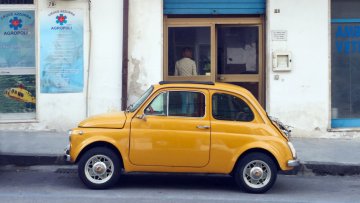With an unreliable bus network and a metro system not quite connected to the main tourist areas, driving is perhaps the best option if you plan to be highly mobile, but be ready for traffic and challenging road signage. From the International Galeão Airport, rental cars, a convenient shuttle van, taxis and the bus are available to get you into town, but if taking public transport, be aware of pickpockets and learn a key few Portuguese phrases.
Look for Itaú Bank's blue logo on the orange city bikes throughout Rio. Registration is required through the Mobilicidade website, and you'll need an active mobile phone to release the bikes at the docking stations with a special app. A U$3 monthly covers one-hour rides at no extra charge, or day passes are available for U$1.50. Check your ride's condition before selecting, since it is not uncommon to find a pedal missing or a flat tire. Bikes must be returned by 22h.
Rio's metro network has expanded considerably in the last decade with downtown and the northern neighborhoods now served by a modern and efficient service.
The main touristic areas in the Zona Sul like Copacabana, Ipanema, Leblon and Botafogo are served by two highly organized bus lines that are run by the Metro system. Known as the Metro de superfície (overground metro), the modern blue and silver buses are delightfully reliable in contrast to the rest of the bus network outside these areas, which should be avoided if unless your Portuguese and you are able to blend in to avoid being a pick-pocket target.
The taxis in Rio are very good and for the most part reliable with down to earth prices. Painted bright yellow with long blue stripes on each side, they are very easy to spot in the sometimes chaotic city traffic. Note that there may be surcharges on weekends and late night. Uber has also established service.

